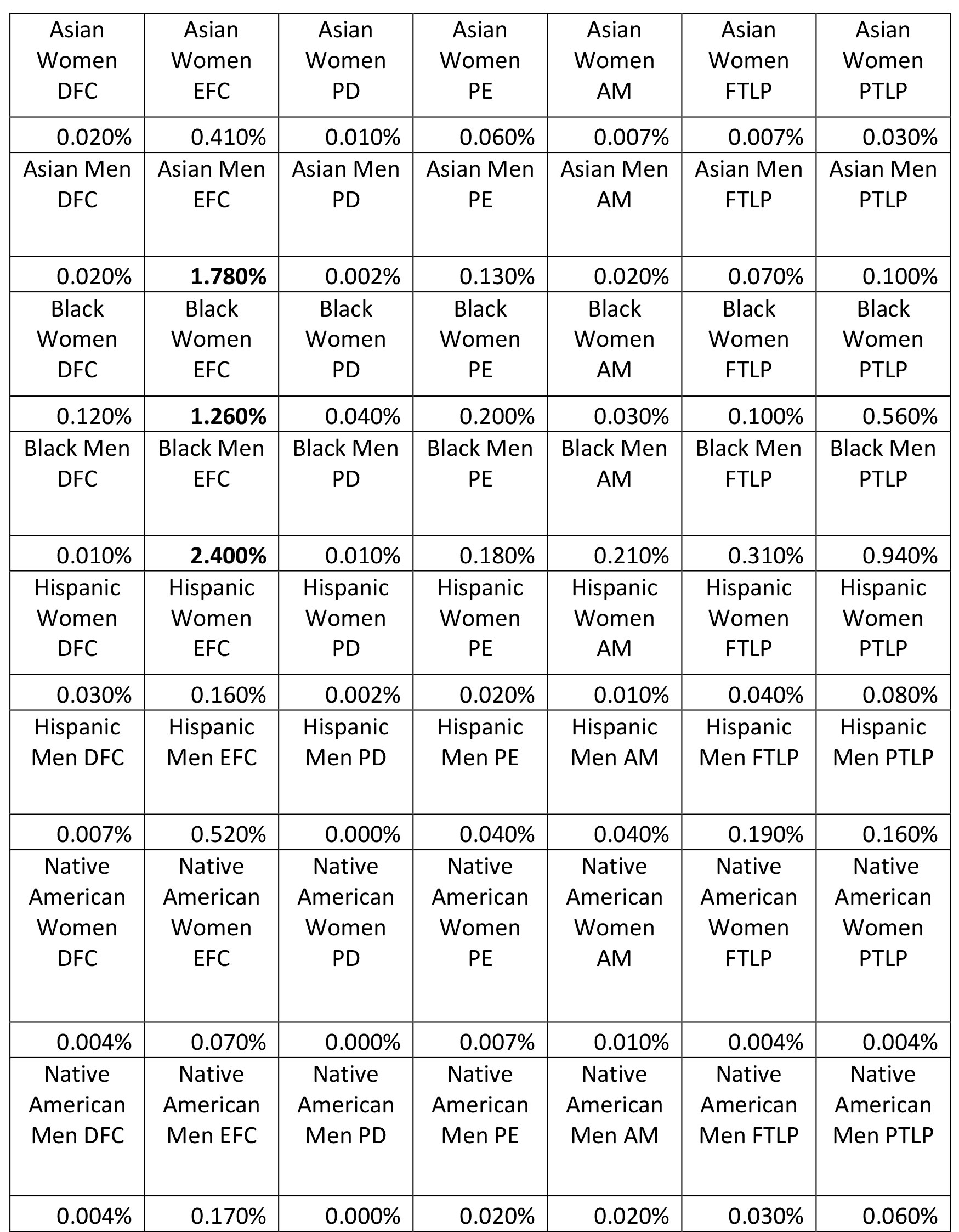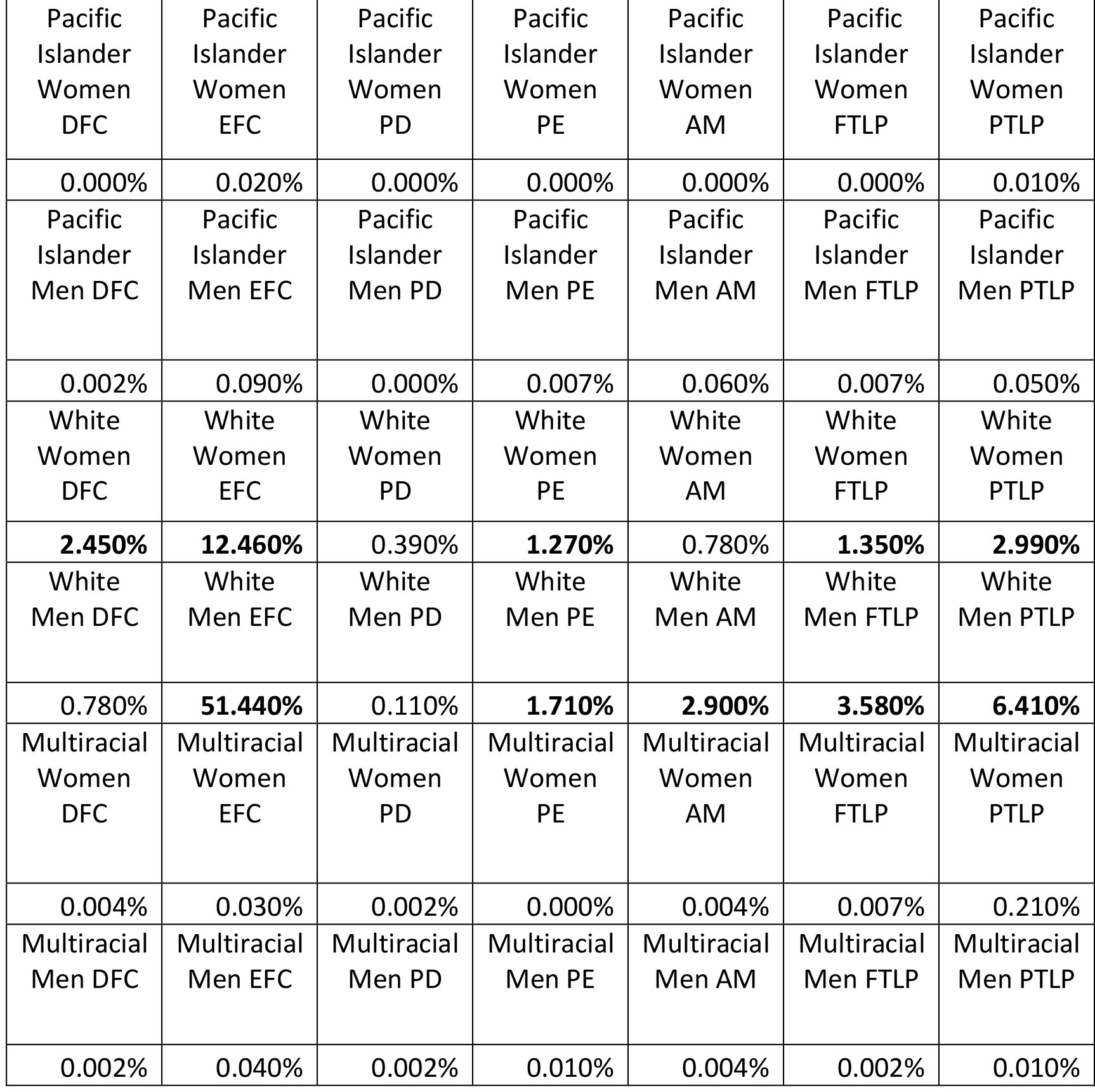By Erin Kane, GCSRW Director of Research and Monitoring
In our third – and final -- installment of the demographic statistics of the ordained leadership of The United Methodist Church, we will examine the intersection of gender, racial-ethnic background, and clergy category by highlighting the status and role of clergywomen of color.
Table 1
Clergy Role by Gender
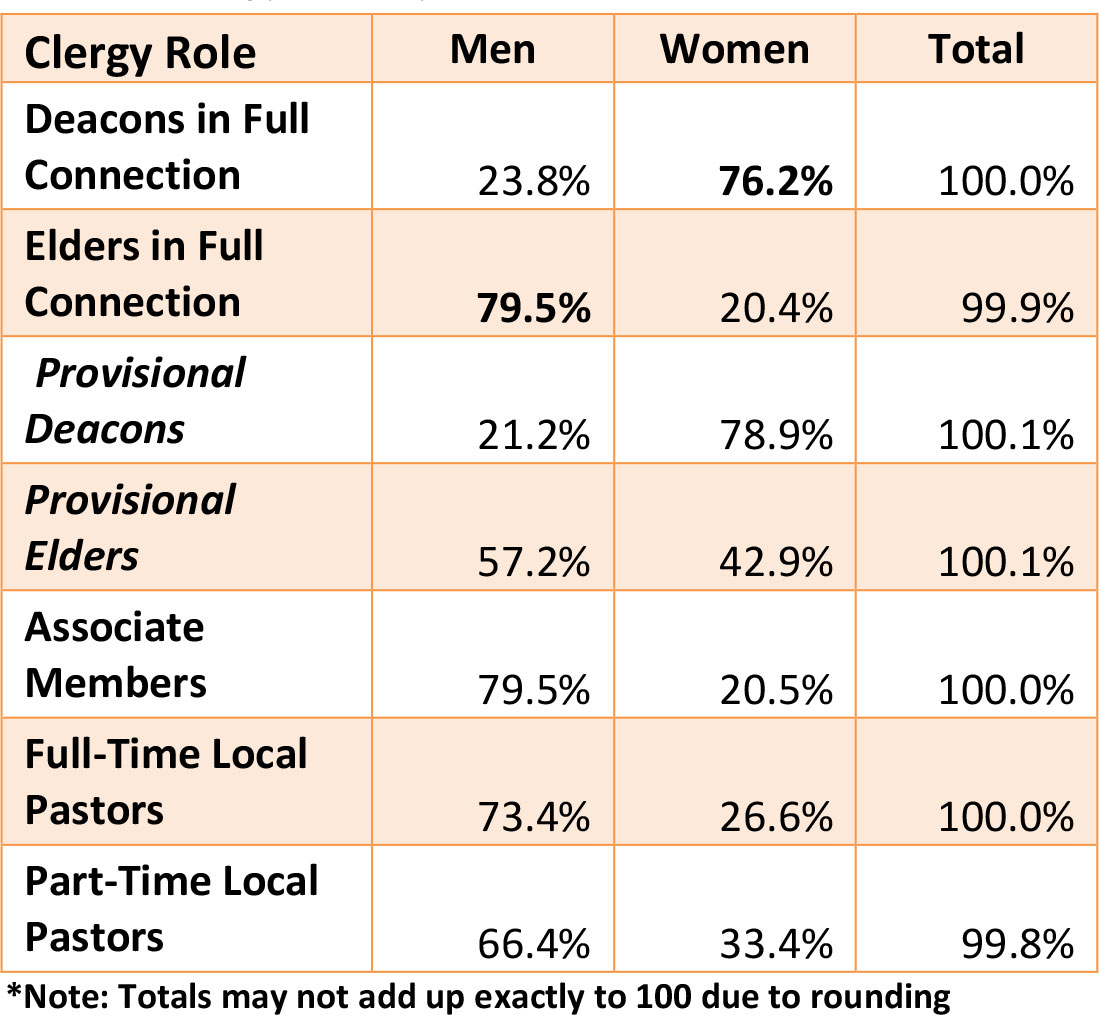
As the December “Women by the Numbers” article stated, women made up about 25% of our active and retired clergy in 2011. Adding racial-ethnic background to the numbers, we can see that white men made up 67% of our clergy, white women made up almost 22%, men of color made up less than 8% and women of color made up less than 4%.
Table 2
Clergy Population by Gender and Racial-Ethnic Background

The pie chart below further illustrates these numbers:
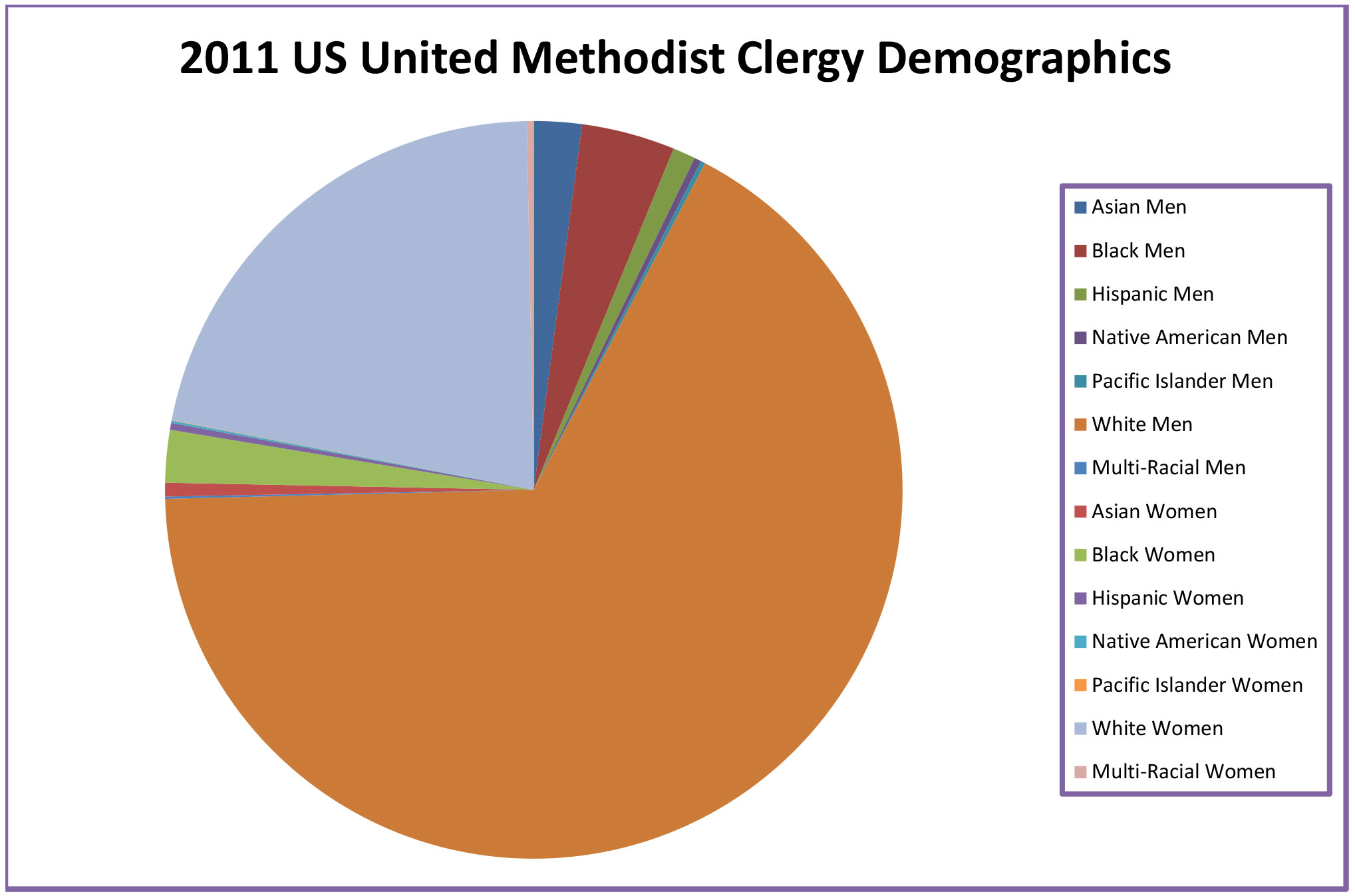
All groups, including women of color, were becoming elders in full connection at much higher rates than other clergy roles, with the exception of multiracial women (See Table 3). However, when gender and racial-ethnic background were figured into the overall make-up of the church, we can see that women of color, as a group, were most highly represented in the role of Part-Time Local Pastors, having made up 7.74% of occupants in that role. (See Table 4).
It is also worth noting that 51.4% of the entire U.S. make-up of The United Methodist ordained clergy are white men who are Elders in Full Connection (See Table 5).
What does all of this mean?
When women of color make up less than 4% of the clergy population in The UMC, it is difficult to discern how much progress has been made in their favor over the last several years. For example, if two Pacific Islander women became Elders in Full Connection, the 2011 number would increase by 25%. If two White women become Elders in Full Connection, the difference would hardly be noticeable.
It is also worth mentioning that in 2011, women of color made up 9.5% of Provisional Deacons and 8.2% of Provisional Elders. Is the Church recruiting women of color to these leadership positions? Are women of color finding more support in pursuing these positions? It will be interesting to see what percent finished seminary and were appointed or employed in Church ministry in the years following.
The highest (non-transitional) concentration of women of color in the church is found in the role of PartTime Local Pastor, and the next highest is in the role of Deacons in Full Connection. Both of these positions receive significantly lower salaries than Full-Time Local Pastors and Elders in Full Connection. According to the salary study released by GBHEM in 2010, “part-time/other local pastors” receive 28% less in salary while Deacons receive an 18% reduction in salary compared to Elders in Full Connection.
Discussion
Do any women of color occupy leadership roles in your congregation?
Does your conference’s clergy membership reflect the lay membership of your conference?
Table 3
Gender and Racial-Ethnic Background by Clergy Role
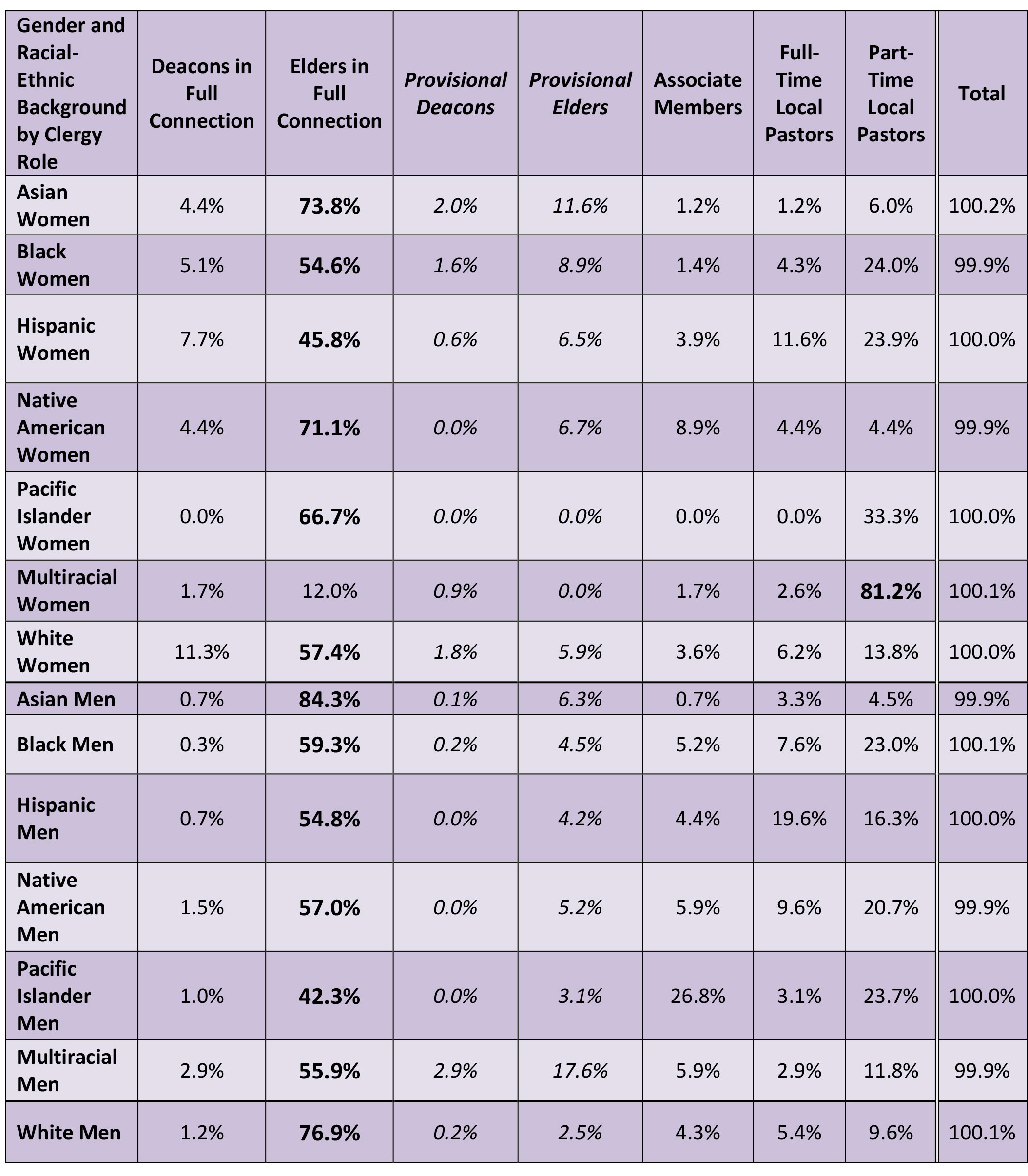
Table 4
Clergy Role by Gender and Racial-Ethnic background.
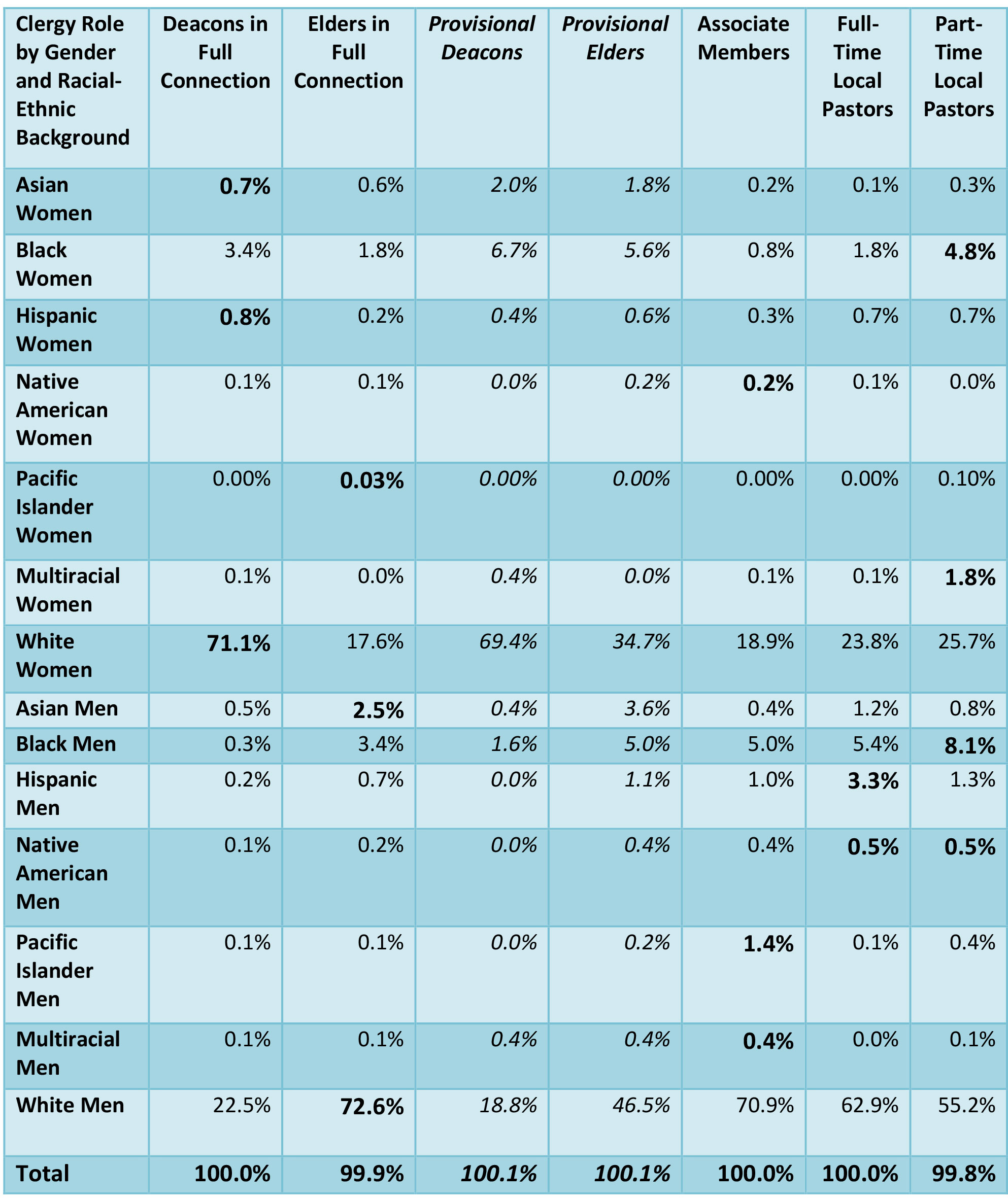
Table 5
Clergy make-up by racial-ethnic background and gender
(DFC=Deacons in Full Connection, EFC=Elders in Full Connection, PD=Provisional Deacons, PE=Provisional Elders, AM=Associate Member, FTLP=Full Time Local Pastor, PTLP=Part Time Local Pastor)
